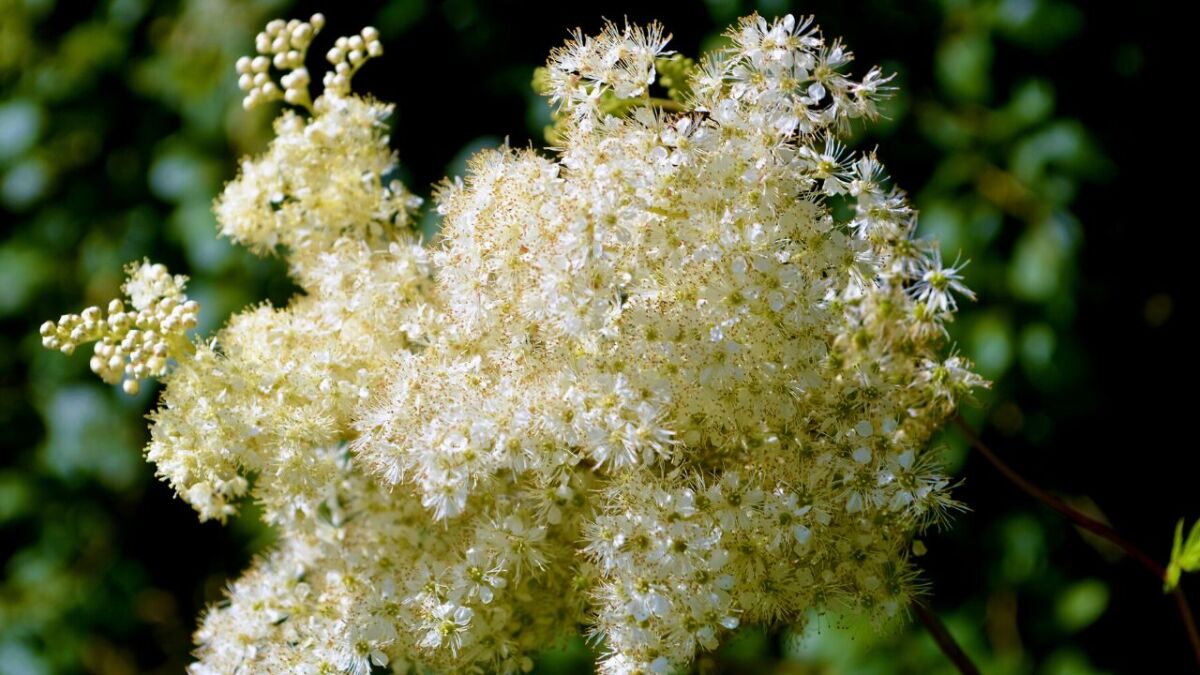
Meadowsweet - a wild herb and medicinal plant - versatile effective and helps with pain
👉 The key facts from this guide
- Meadowsweet is a medicinal plant with pain-relieving, anti-inflammatory, and antimicrobial properties.
- The plant is rich in ingredients such as salicylic acid, flavonoids, essential oils, and tannins.
- Meadowsweet can help with colds, gastrointestinal problems, rheumatism, and skin problems.
- The plant grows in moist, semi-shaded locations and is widespread throughout Germany and Central Europe.
- Flowers, leaves, and roots can be used for medicinal purposes, with flowers being the most effective.
- The plant can also be used in the kitchen, for example in teas, salads, desserts, and alcoholic beverages.
Currently, there is hardly any plant that excites me more than Meadowsweet, the queen of the meadow - as the common saying goes.
Meadowsweet surpasses all other grasses in the meadow, and its ingredients are truly royal.
When I was in the Black Forest last week, I was in the cabin with the flu and could only move lazily.
In front of the cabin, next to nettle, there were plenty of meadowsweets. I collected some plants and made myself a tea from the leaves and flowers.
My body aches, headache and even my scratchy throat were acutely relieved.
After two days in bed and two cups of the above mentioned hot drink daily, I was up and about and could expand my collection area.
In addition to meadowsweet, I found other herbs, drank tea diligently and was fit again after two more days.
Based on this experience, I decided to write a praise text (guide) for the plant that I value very much: Filipendula ulmaria (Meadowsweet).
Where to find this wonderful herb and how to use it for yourself, you can find out here!
Some legal information
I would like to point out that I have not received any medical education and am only reporting on my experiences here. I was able to treat myself well in the above mentioned case because I know my body well.
Especially with more severe symptoms, herbs should not be an alternative to visiting a doctor, but can support you massively in your recovery.
Historical - where does Meadowsweet get its name from?
Contrary to expectations, the name Meadowsweet has nothing to do with girls, but is related to the sweet smell when mowing the meadows.
Meadows used to be called "Mede" and that's where the fragrant herb gets its name.

However, this is not the only explanation.
The Germanic people also used the aromatic herb to "sweeten" their honey wine called Met. However, since met is already quite sweet, it was probably used more for flavoring.
The Celts also recognized the value of Meadowsweet and considered it sacred.
During the flowering period of Meadowsweet, they were often harvested in large quantities and distributed in the houses. However, this ritual had no spiritual background, but served as a room fragrance.
The church later adopted this practice and would have the fragrant flowers spread on the ground at weddings.
Where to find Meadowsweet
The true Meadowsweet belongs to the rose family (Rosaceae) and blooms from June to August.
Meadowsweet can be found everywhere in Germany, and you also have good chances in other countries in Central Europe. In North America, it is considered an invasive species.
It can even be found at elevations up to 1400 meters and prefers moist and nutrient-rich soils as well as semi-shaded, moist locations.
Look for it at riverbanks, lakes, streams, ditches, moist meadows and slopes.
Identification of Meadowsweet
Meadowsweet ranges between 50 and 150 centimeters in height, and in some cases can grow up to two meters tall. The long stem is angular and often has reddish discolorations.
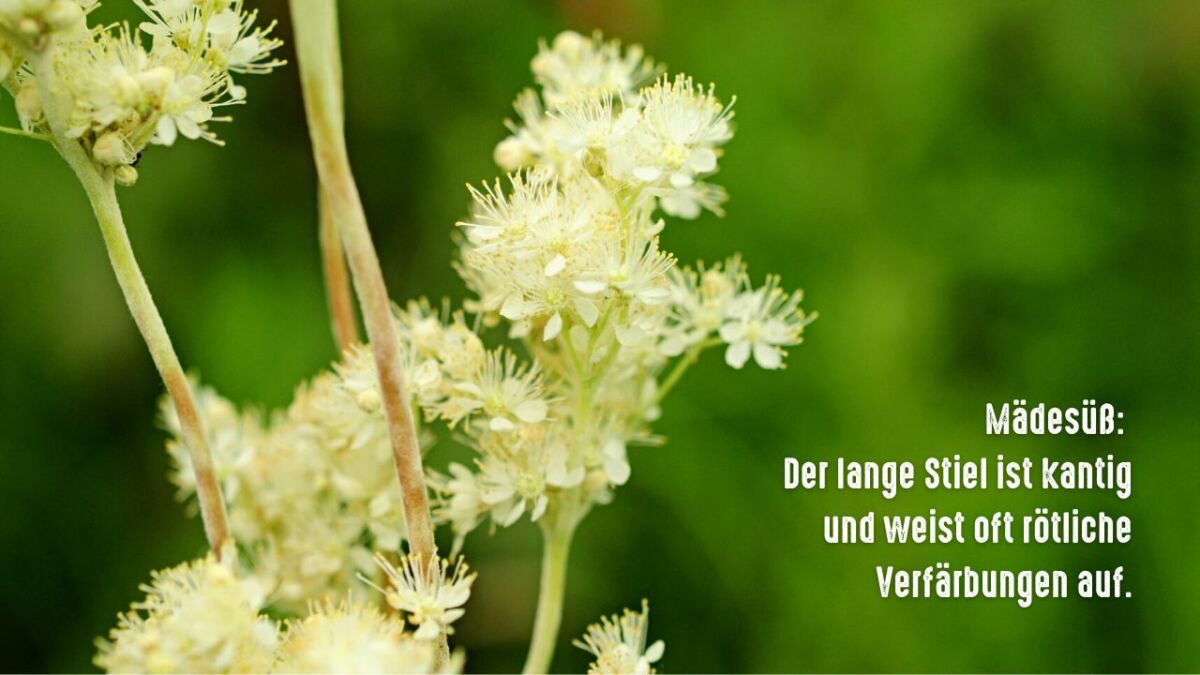
The leaves are dark green, unevenly feathered and serrated. The end leaves are always three divided and sit in front of larger leaf pairs.
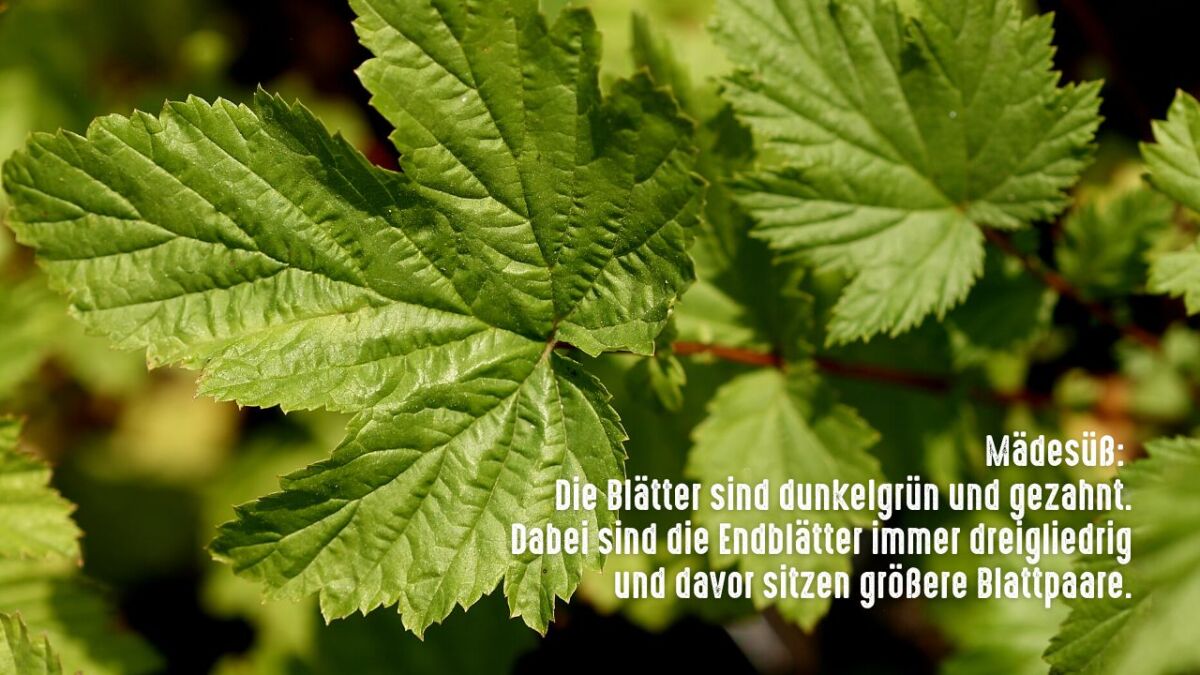
In midsummer, the blossoms can also help you identify the plant. Not only do the flower clusters catch the eye visually, but they also have a strong scent that resembles honey or vanilla. The color of the flowers ranges from white to yellow, and the clusters are very voluminous.
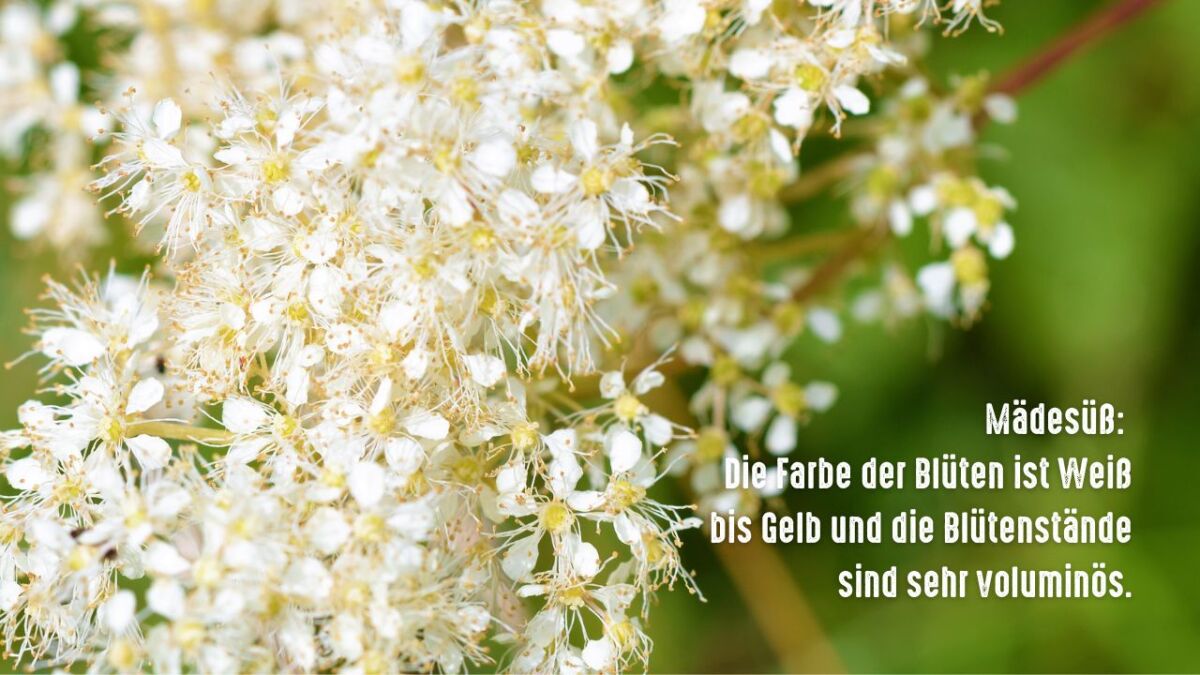
Upon closer inspection, there is no danger of confusion with other plants, although if gathered hastily, confusion with some poisonous species of the Apiaceae family (umbellifers) might occur. However, with careful attention, there is no risk involved.
Harvesting
For medicinal purposes, mainly the flowers are used, although other parts of the plant, such as leaves and roots, can also be useful. Although the active ingredient content is lower here, the constituents are present throughout the entire plant.
The flowering period in Central Europe is usually from June to August. Often, meadowsweet appears in large quantities, allowing you to store a supply of meadowsweet flowers for the rest of the year.

As always, make sure to leave two thirds of the population for the hardworking pollinators. They make this wonderful plant possible. Additionally, for your health, pay attention to two things:
- Firstly, the area around the plant should not be plowed, unless you are confident that no pesticides are being sprayed. Otherwise, you should stay away from it. Pesticides harm us more than this plant can heal.
- Secondly, the plant should not be infected by fungi, specifically Triphragmium ulmariae, a rust fungus that should be avoided.
After harvesting, you should shake your yield properly to remove any hitchhikers.
You can, of course, wash the leaves and flowers thoroughly before processing them.
You can then dry the flowers or directly prepare a tincture with them.
Medical Properties of Meadowsweet
Meadowsweet is a medicinal plant and rich in various exciting ingredients. In addition to flavonoids, essential oils, silicic acid, and citric acid, the herb also contains salicylic acid.
Some may know salicylic acid from conventional painkillers like aspirin, since the well-known medication is based on this acid. Most of the active substances are in the flower buds of the plant.
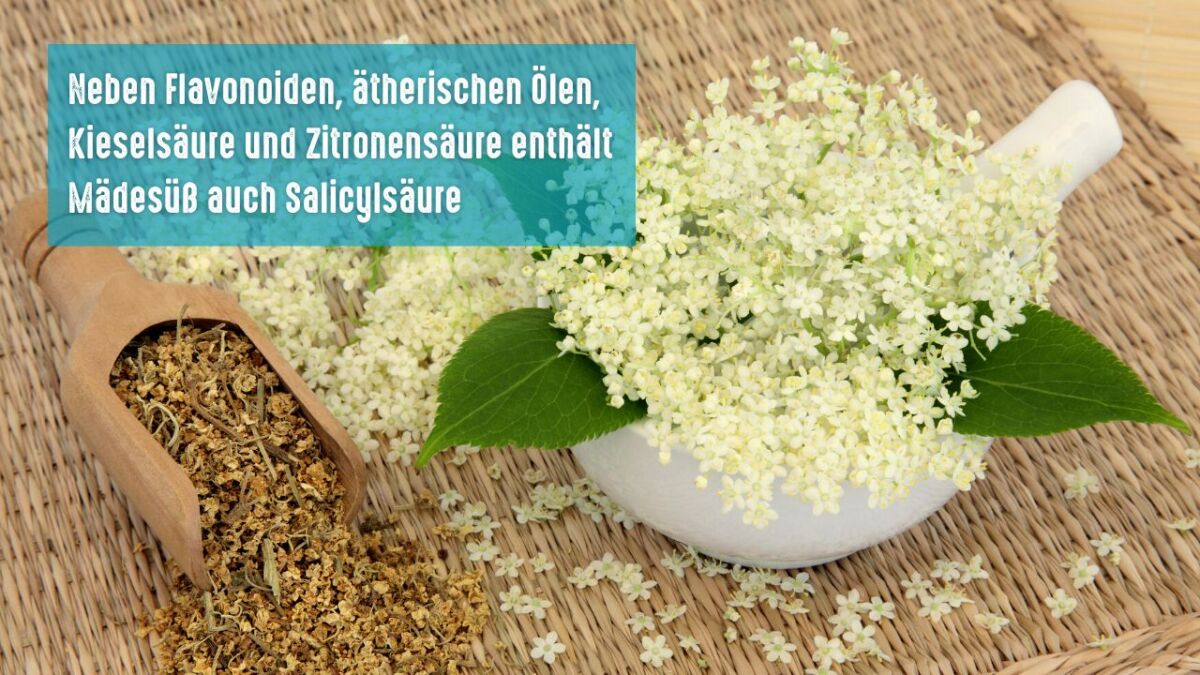
Aside from the unique taste, salicylic acid provides some very practical healing effects to the plant, much like aspirin. It is the same active substance found in chemically processed aspirin. Meadowsweet is one of the best herbal painkillers.
Together, these ingredients offer a whole range of healing effects.
- Salicylic acid has a pain-relieving, anti-inflammatory, and antimicrobial effect.
- Even the mucous membranes are delighted. Tannins are known for their protective properties and are also found in meadowsweet. They also promote dehydration and have positive effects on the skin.
- The plant has diaphoretic properties, which can have a beneficial effect on early-stage colds.
- Stomach and intestinal complaints such as diarrhea or heartburn are also said to be relieved.
- The dehydration of the body and the diuretic properties support bladder function and counteract illness.
- In addition, meadowsweet is also used for rheumatism. When used externally, the anti-rheumatic and anti-inflammatory effects can take effect with joint pain and gout. The production of creams is also very popular.
- The essential oils, on the other hand, are suitable for aromatherapy and steam baths are recommended for sensitive skin or acne. Cream production is also possible here.
- The flavonoids, tannins, and salicylic acid components contained in the plant also have a soothing effect on stomach pain and promote wound healing.
The intense scent, on the other hand, is due to the vanillin, which we also know from vanilla.
If you have an allergy to salicylic acid, meadowsweet should be avoided at all costs. Also, due to the salicylic acid, the plant should only be consumed in moderation. A maximum of three cups of tea per day is recommended.
When considering the various healing effects, it becomes clear that meadowsweet can do much more than just refine honey wine.
Using Meadowsweet in the Kitchen
Aside from tea and mead, there are many other dishes that can be enhanced with meadowsweet.
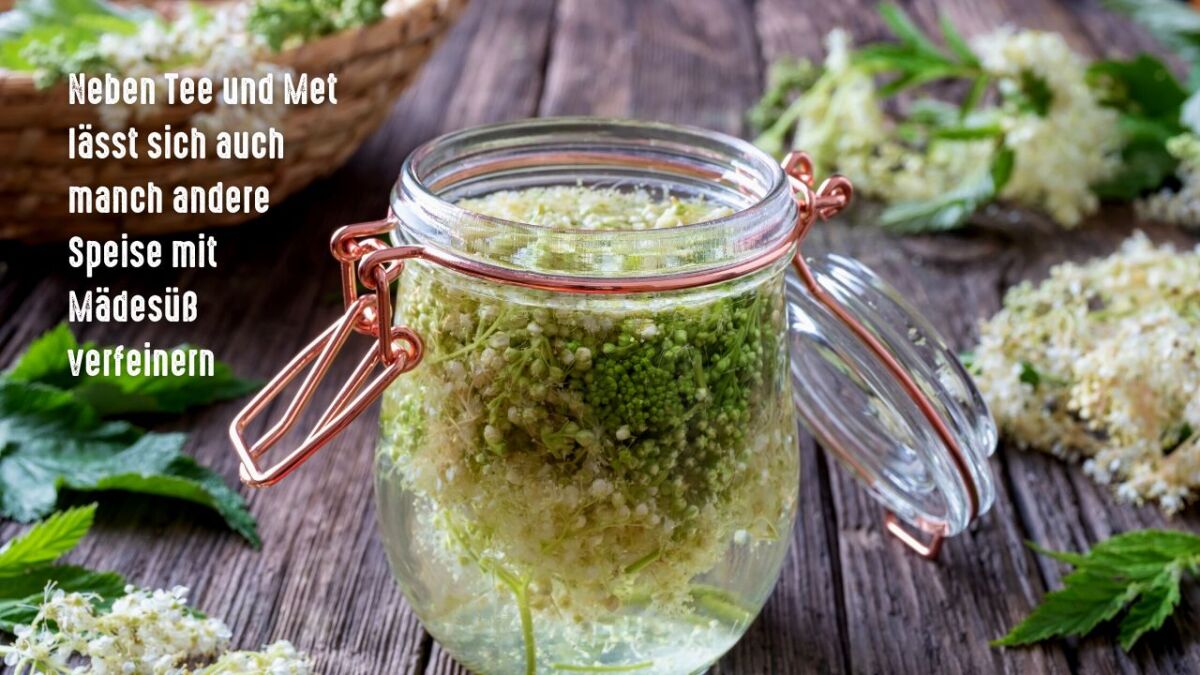
The leaves can be eaten raw or cooked. The taste is quite unique, but a few leaves can be good at salads or herb quark.
When cooked, they lose their bitter taste and can be used to replace spinach alongside nettles. However, due to their unique flavor, I recommend using only small amounts.
The flowers of the plant are more commonly used. In addition to mead, you can use the flowers to add flavor to many alcoholic and non-alcoholic beverages, creating unique drinks for your next party.
In addition to alcohol, the aromatic flower is also used in desserts. You can make a syrup from it, which can be served with all kinds of sweet dishes.
Recipe for Meadowsweet Tincture
All you need for a meadowsweet tincture is one third of a screw-top jar filled with alcohol (approximately 40% or more), and the remaining two thirds filled with fresh meadowsweet. The most effective part of the plant is the flower, but the leaves and stems also contain healing properties.
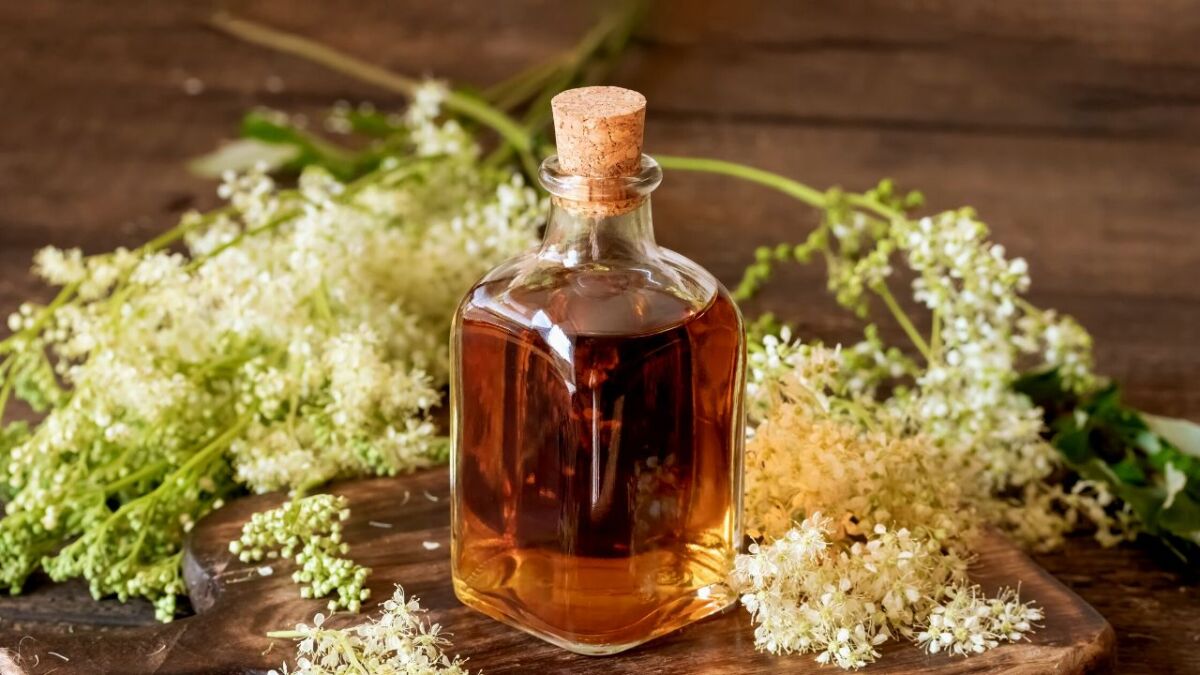
Then, close the jar and let it sit in darkness at room temperature for three weeks. Shake the jar once a day during this time.
After three weeks, the tincture can be filtered and labeled, and it will last for approximately two years. It can be applied to the temples for headaches, as well as joint or muscle pain.
It is also possible to take it orally: For adults, a daily dose of between 2 and 4 ml of the above-mentioned tincture is recommended. This should be done according to the symptoms in consultation with a doctor.
Tea preparation
Take two teaspoons of meadowsweet flowers or four teaspoons of meadowsweet herb (dried and crushed tips of the plant) per cup. Then pour boiling water over it and let the broth steep for 10 minutes.
Conclusion
Meadowsweet is a fantastic plant that outdoor enthusiasts should definitely know.
Especially in the wilderness without much equipment and medicine, it is incredibly reassuring to know that you can heal minor discomforts with the gifts of nature.
In my opinion, this leads to a much safer and more familiar experience in the wilderness.
Also, the fact that you can find its medicine in a SHTF situation in the forest is interesting for crisis prevention! The supplies in the pharmacies or even the self-made stock from the home pharmacy will one day come to an end. It is all the better to be able to make your own medicine.
But caution is advised: I tend to consume more than the recommended dose of this wonderful plant, but due to the salicylic acid, you should certainly stick to three cups of tea a day.
Have fun collecting and trying out.

Sources for the guide
https://www.wildfind.com/rezepte/maedesuesstinktur
https://www.plantura.garden/kraeuter/maedesuess/maedesuess-pflanzenportrait
https://www.youtube.com/watch?v=gq2fnct2jH0
https://www.kraeuter-buch.de/kraeuter/Maedesuess.html
https://de.wikipedia.org/wiki/Echtes_M%C3%A4des%C3%BC%C3%9F
https://medlexi.de/M%C3%A4des%C3%BC%C3%9F
https://www.askaprepper.com/better-than-aspirin-the-plant-every-prepper-needs-in-their-cabinet/

Author of the guide
Martin Gebhardt
Hey, I'm Martin. On my blog, you will learn the basics and numerous details about living in the wild. I think survival, bushcraft and the good life in nature are the keys to happiness. Find me here on Instagram or on YouTube. You can find more about my mission on the About Me page.
Was this guide helpful?
18 people found this guide helpful.
5.00 out of 5 points (18 Ratings)
Comments (0)
This post may contain affiliate links. So if you click on the links and make a purchase, I will receive a small commission at no additional cost to you. Click here, to learn more about it.


